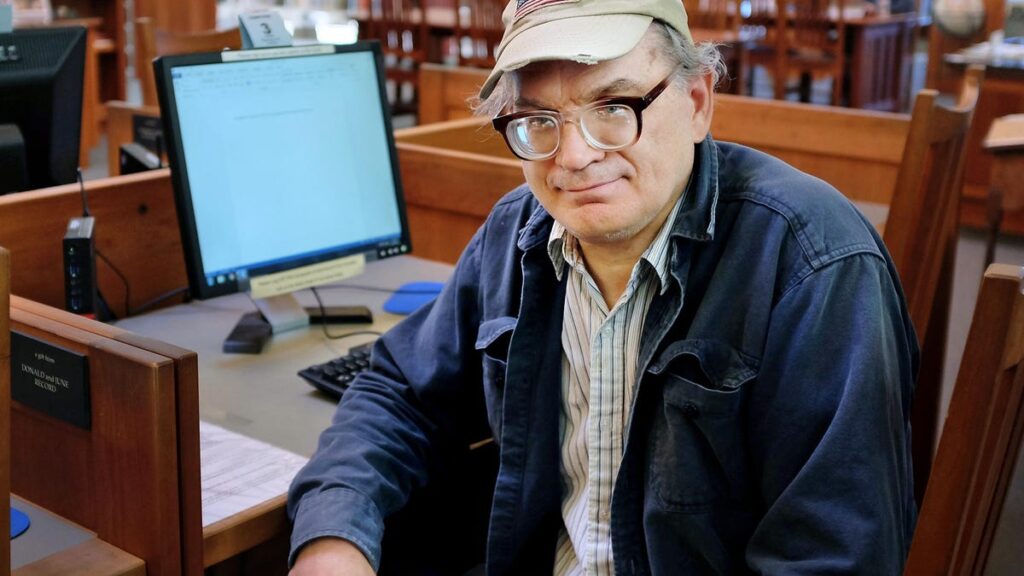Notes: James Kences provides a fitting introduction to a largely obscure historical moment: when the English first met the Indigenous Native American population in the northeastern part of North America in the early 17th Century.
“Although these Salvages are found to be without Religion, Law and King,” Thomas Morton wrote in New English Canaan, “yet they are not altogether without the knowledge of God.”
Morton, who died here in the mid-1640s, is one of a small number of observers of native culture from the earliest period of settlement, who are consulted by modern scholars for information related to the lifeways of the Indigenous people.
The epidemic disease that struck the coastal tribes in the years 1617 to 1619, very likely altered the pattern of life in significant ways, with the most direct impact resulting from diminished population and accompanying social disruption. Thus, Champlain’s passage in 1605, Captain John Smith’s survey voyage of 1614, before the plague emerged, was visibly different from Capt. Christopher Levett’s only a decade later. Levett, we know from his description, was to confront a village, cleared fields, recently abandoned.
While Morton could not escape from his biases, as he revealed with references to devil worship, he also spoke admiringly of aspects of the cultures he encountered. These people are not… a dull or slender-witted people, but very ingenious and very subtle.”
“… These people leads the more happy and freer life, being voyde of care, which torments the minds of so many Christians: They are not delighted in baubles, but in usefull things.” He seemed to be almost envious of humans who were able to derive virtually all their needs from the surrounding environment. “They are supplied with all manner of needful things, for the maintenance of life and livlihood.”
If essentials were not so hard for the poor to obtain in contemporary England, Morton imagines, “there would not be so many starved in the streets, neither would so many gaoles[jails] be stuffed, or gallows furnished with poor wretches…” The crisis of an increasing population of poor, the destabilizing effect upon society, inequality of the different social orders would have been experienced in England, which had reached a population of four million at the opening of the century, when London, by one estimate, held 155,000.
The larger English cities had become increasingly reliant upon mined coal, and the choking smoke and pollution were a consequence of the diminished forests of the nation. Here, in America, the expanse of woodlands and the abundant wildlife were mentioned in the promotional tracts. “As for plank, crooked timber, Levett declared on the potential for ship building, “the world cannot afford better… masts and yards of all sizes, there be also trees growing, whereof pitch and tar is made… There is also much excellent timber for joiners and coopers.”
The English brought their expectations with them, as well as the level of technology with which they were acquainted. Religion, for example, possessed a very specific meaning, far more structured, with an array of associated symbols. Obviously, none of this could be recognized among the cultures of this region. And the same could be said of an entire group of institutions for which nothing readily existed for comparison.
An item as basic as iron, from which ordinary English household and occupational implements were fashioned, and that was indeed so ubiquitous by the seventeenth century, was entirely mysterious to the natives, so much so that iron articles were deposited with the corpses at burial and are recovered by archaeologists. And iron is only one of the materials that evoked this reaction as being supernatural in origin. From this circumstance, an enthusiasm for trade was generated.
There was genuine culture shock as an essentially Neolithic population that remained reliant upon stone tools, ceramics and agriculture, was exposed to exotic newcomers richly endowed with numerous strange, powerful objects. Over time, and in a gradual process, the more advanced technologies were adopted. Archaeology has indicated how this happened, as reflected in artifacts that were manufactured during the transition from as early as the 1500s.
Firearms or gunpowder weapons represented one technology that was to have multiple consequences. The prohibition on making them available to natives was violated by individuals engaged in illicit trade. The Plymouth Colony leadership organized a military raid on Thomas Morton because they assumed he was guilty of this offense. During the decade of the 1620s, the colonists informed Sir Ferdinando Gorges and the Council for New England, that Morton had “placed more than sixty guns in Indian hands.”
The prohibition against firearms was virtually impossible to enforce, as many traders, both English, French and Dutch, succeeded in placing themselves beyond the reach of authority. At the outset, the weapons held the same fascination as the other European objects, with the added potential advantage for hunting or warfare. As William Cronin notes, the use of muskets “made the killing of large herbivores,” such as deer or moose, “a simpler task.”
“. . .I never saw more than two fowling pieces, one pistol. . .” Captain Levett declared in his promotional tract following his 1624 voyage to the Maine coast. Within a decade, the situation had already changed dramatically, as John Josselyn observed: “of late he is a poor Indian that is not master of two guns, which they purchase of the French, and powder and shot…” This availability would only increase as the working mechanism of the guns became more efficient with the near universal profusion of the flintlock, as the older matchlock became obsolete.
James Kences is the town historian for the town of York.

